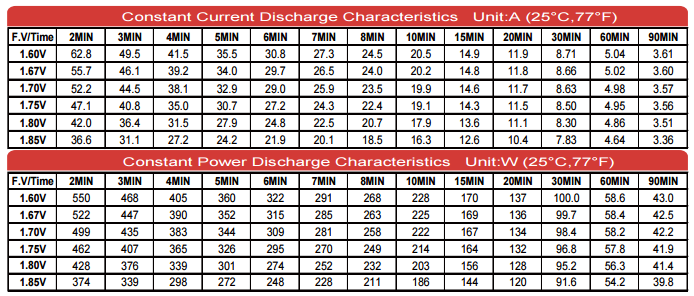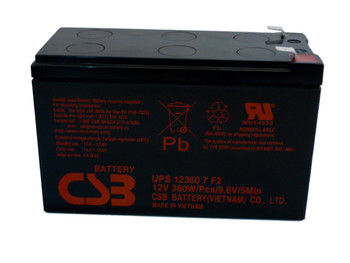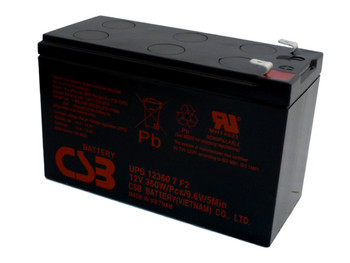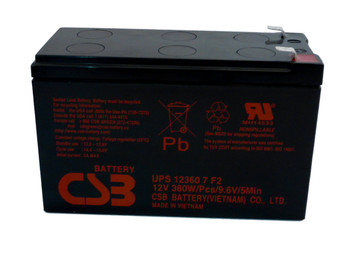Description
UPS123607 use the latest wafer-thin plate technology to provide optimum high-rate (5-min) performance. With more than 260 cycles at 100% discharge in cycle service, or up to 5 years of standby service.
Cells Per Unit 6
Voltage Per Unit 12 V
Capacity 60W @ 5minute-rate to 1.6V per cell @25°C (77°F)
Weight (kg) Approx . 2.0 kg(4.41 lbs)
Maximum Discharge current (A) 100/130A (5sec)
Internal Resistance Approx. Approx . 22 mΩ
Operating Temperature Range Discharge?-15?~50?(5°F~122°F)
Charge?-15?~40?(5°F~104°F)
Storage?-15?~40?(5°F~104°F)
Nominal Operating Temperature Range 25°C ±3°C (77°F ± 5°F)
Float charging voltage 13.5 to 13.8 VDC/unit Average at 25°C (77°F)
Recommended Maximum Charging current limit 3.0A
Equalization and Cycle Service 14.4 to 15.0 VDC/unit Average at 25°C (77°F)
Self Discharge It should be more than 75% of the capacity that before storage after stocked for 6 months at ambient temp. 25?
Terminal F1/F2-Faston Tab 187/250
Container Material ABS(UL94-HB) & Flammability resistance of(UL94-V0) can be available upon request.
UPS - Uninterruptible Power Supply - battery upgrade options:
• UPS12460F2 - 12V 9.0Ah - UPS Battery 76.7 Watts Per Cell - Click here to view
• UPS12580F2 - 12V 10Ah - UPS Battery 96.7 Watts Per Cell - Click here to view
What is the difference between the 7Ah battery and the 10Ah battery? Why would I upgrade?
Simply put both versions will fit in your application and will work fine. As the dimensions of the 12 Volt 7Ah battery and the 12 Volt 10Ah battery are the same, they are interchangeable. Amp-Hours basically show how much energy a battery holds. As long as the battery you want to replace has the same voltage and dimensions it is okay to substitute it with a different Ah replacement. Keep in mind that in most cases as the Ah rating goes up so does the size of the battery!
In summary it is all a matter of your preference. If you don’t mind paying a little more for the 10Ah version you will receive a higher capacity battery, which can offer you a longer runtime.


















